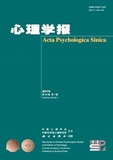Distributive fairness is a basic behavioral norm and an important pursuit in our daily life, and it plays an important role in our social interactions. In studies of distributive fairness, individuals' fairness perception and the factors affecting it have gathered much research attention. Previous research shows that the degree of fairness allocation can affect individuals' fairness perception. Based on the equity theory of fairness, equal allocation can be perceived as fairness for individuals if they have equal ability and equal contribution to the allocation; less than equal allocation may be perceived as disadvantageous inequality, and more than equal allocation as advantageous inequality. Previous studies also suggest that social situations, such as social hierarchy and social distance, can affect individuals' fairness perception. In real life, resource allocation often involves power situations, in which individuals may have different levels of power. How power influence individuals' fairness perception? Is the fairness perception power-dependent? So far, few studies have explored the effect of power on fairness perception directly. The present study aims to address this question through three experiments.
Based on the approach-inhibition theory, the powerful usually expect themselves to be surrounded by rewards and lack of threats, while the powerless usually expect themselves to be surrounded by threats and lack of rewards. Previous research shows that individuals' cognition and behavior can be affected by their internal expectations, and they are often sensitive to outcomes that violate their own expectations. Equal allocation and advantageous inequality allocation mean reward, while disadvantageous inequality means threat. Thus, equal allocation and advantageous inequality allocation are the expectation of the powerful, and disadvantageous inequality allocation is the expectation of the powerless. Therefore, we hypothesize that the interaction between power and fairness degree can impact individuals' fairness perception.
Three experiments were designed to test the hypothesis. To provide objective basis for the definitions of fairness, disadvantage inequality, and advantage inequality, we measured individuals' fairness ratings on different allocations in both the powerful and the powerless situations, after situation priming that manipulated power perception, in Experiment 1. In Experiment 2, we further investigated individuals' fairness ratings on three different allocations (i.e., disadvantageous unequal allocation, equal allocation, advantageous unequal allocation) in both the powerful and the powerless situations. We also recorded individuals' reaction times of fairness rating in Experiment 2 to gather extra evidence for fairness perception. In Experiment 3, a different manipulation method, role playing, was used to prime power. Same as in Experiment 2, we also recorded the fairness ratings and reaction times of the powerful and the powerless in Experiment 3.
In terms of fairness rating scores, the powerful rated the fairness degree of equal allocation and advantageous unequal allocation higher than the powerless, and they rated the fairness degree of disadvantageous unequal allocation lower than the powerless. In reaction time, the powerful reacted faster than the powerless no matter what the allocation was. These results suggested that individuals' distributive fairness perception is power-dependent, supporting our hypothesis. The present findings provide experimental evidence for the approach-inhibition theory of power and the equity theory of fairness. They also improve our understanding of the relationship between power and fairness perception.




